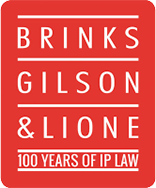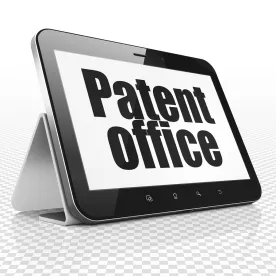Much attention was drawn to the Federal Circuit’s decision on January 8, 2018 in Wi-Fi One v. Broadcom, 878 F.3d 1364 (Fed. Cir. 2018), where the court allowed a patent owner to appeal the Patent Trial and Appeal Board’s (“PTAB”) rulings on the statutory time bar for an inter partes review (“IPR”). The appeal stemmed from a patent litigation filed by Ericsson in September 2010 against D-Link Corporation and eleven other co-defendants. The litigation ended with a $10 million infringement verdict against D-Link. See Ericsson Inc. v. D-Link Sys., Inc., 773 F.3d 1201 (Fed. Cir. 2014). Broadcom, a non-party in the D-Link case but a Wi-Fi-compliant chipset supplier to D-Link, filed three IPRs (IPR2013-00601, IPR2013-00602 and IPR2013-00636) against the three patents-in-suit (US Patent 6,772,215; US Patent 6,446,568; and US Patent 6,424,625), which were then owned by Wi-Fi One, LLC in September 2013. The IPR filing itself raised yet another interesting question – is a supplier, who agreed to indemnify a defendant and is a named defendant in a patent litigation, an IPR privity petitioner and therefore barred from filing an IPR more than one year after the service of the complaint?
The Leahy-Smith America Invents Act (“AIA”) imposes a limitation under 35 U.S.C. §315(b), which states that “[a]n inter partes review may not be instituted if the petition requesting the proceeding is filed more than one year after the date on which the petitioner, real party in interest, or privy of the petitioner is served with a complaint alleging infringement of the patent.” (emphasis added) In Aruze Gaming Macau, Ltd. v. MGT Gaming, Inc., the PTAB explained that a real party interest refers to the relationship “between a party and a proceeding” and a privity “focuses on the relationship between parties.”.IPR2014-01288 (PTAB Feb. 20, 2015). A privity relationship is “more expansive and encompasses parties that do not necessarily need to be identified in the Petition as a real party-in-interest.” See Nestle USA, Inc. v. Steuben Foods, Inc., IPR2014-01235 (PTAB Dec. 22, 2014).
Ericsson filed a motion for additional discovery seeking indemnity agreements and other documents relating to Broadcom’s relationship with D-LINK in order to demonstrate that Broadcom was in privity with D-LINK and therefore that Broadcom’s IPR petitions were time-barred. See Broadcom Corp. v. Wi-Fi One, LLC, IPR2013-00601 (PTAB Jan. 24, 2014). The PTAB denied Ericsson’s motion, explaining that “[t]o show privity requires a showing that Broadcom would be bound to the outcome of the Texas Ligation. To be bound, in normal situations, Broadcom must have had control over the Texas Litigation”. Id. citing Bros, Inc. v. W.E. Grace Mfg. Co., 261 F.2d 428, 429 (5th Cir. 1958)(holding that “indemnity payments and minor participation in a trial are not sufficient to establish privity”). The PTAB further relied on Dentsply Intern., Inc. v. Kerr Mfg. Co., which emphasized that “[c]ontrol of the litigation, or some sort of representation, constitutes a ‘crucial’ factor”. 42 F.Supp.2d 385, 398 (D. Del. 1999). An indemnification agreement and payment to the named defendant pursuant to the indemnification agreement usually are not sufficient to establish such control for purposes of privity. See Broadcom Corp. v. Wi-Fi One, LLC, IPR2013-00601 (PTAB Jan. 24, 2014). In a later decision, however, the PTAB found that an opportunity to exercise control over an indemnifying party’s defense would create such privity and bar the petitioner’s IPR filings. See GE Corp. v. Transdata, Inc., IPR2014-01559 (PTAB Apr. 15 2015) (GE agreed to indemnify OG&E provided that GE would direct and control the litigation and GE’s opportunity to exercise such control over OG&E’s defense resulted in its IPR filings being denied under 35 USC §315(b)).
In Taylor v. Sturgell, the Supreme Court identified a non-exhaustive list of factors to consider when reviewing the privity issue:
(1) the existence of an agreement to be bound;
(2) a pre-existing substantive legal relationships between the person to be bound and a party to the judgment (e.g., "preceding and succeeding owners of property");
(3) adequate representation by someone with the same interests who was a party (e.g., class actions and suits brought by trustees, guardians, and other fiduciaries);
(4) assumption of control over the litigation in which the judgment was rendered;
(5) where the nonparty to an earlier litigation acts as a proxy for the named party to relitigate the same issues; and
(6) a special statutory scheme expressly foreclosing successive litigation by nonlitigants.
553 U.S. 890 (2008).
The Federal Circuit stated in a more recent case that “control is indeed ‘one of a variety of considerations’”. See WesternGeco LLC v. ION Geophysical Corp. (In re WesternGeco LLC), 889 F.3d 1308, 1320 (Fed. Cir. 2018). In fact, some of the Federal Circuit and PTAB found privity based on the fourth Taylor factor – assumption of control over the litigation. See First Data Corp. v. Cardsoft LLC., IPR2014-00715 (Oct. 17 2014) (PTAB found control or opportunity to control based on the facts that VeriFone indemnified First Data, chose counsel for First Data, funded the IPR, discussed with First Data about prior arts to be asserted, and denied institution of an IPR).
Those who are entering into a supply agreement should be aware that depending on the degree of control recited in the intellectual property indemnification clause in the agreement, the PTAB may find you in privity to a party of a future IPR proceeding.





 />i
/>i

